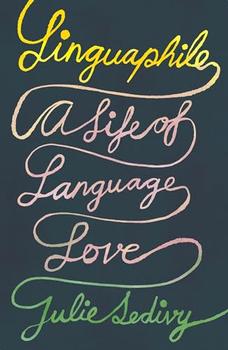Summary | Excerpt | Reviews | Readalikes | Genres & Themes | Author Bio

Why We Listen to What 'They' Say
by Douglas Rushkoff
Once roped in, you could be subjected to standard fear-mongering. I personified the enemy as teams of psychologists, working late into the night to devise plans for shopping malls that thwart your natural cognitive processes. These devils hope to disconnect you from your own soul, I implied.
Then came simple presupposition. I suggested what would happen if you read on. "As we'll see," I claimed, presupposing that you will soon see things as I do. I stated it as an inevitability.
What better time to establish my own expertise? I enumerated my qualifications--how I have spent years studying the coercive techniques of leading industry experts, and how I have written books on the effect of media on human consciousness.
After the tone had been set, I was free to engage you in one of the oldest coercive techniques of them all: the story. You were meant to identify with my plight--how my optimistic naïveté about media and culture led me into the clutches of the advertising industry, turning my own work against its purpose. Like a spin doctor relating the tale of a downed jet or sexually deviant politician, I confessed my sins--exaggerated them, even--to turn a disaster into an opportunity for redemption. The comeback kid.
Sadly, my story is true; the point is that I've used the saga to gain your trust and engage you in my fight. The technique is simple. Create or present a character with whom someone can identify, then put that character into jeopardy. If the reader has followed the character into danger, he will look to the storyteller for a rescue, however preposterous. The storyteller alone has the ability to relieve the reader's anxiety, if he chooses to. And the relief I offered was to go to war against our new enemy: the coercers, who, like hunters, mean to track us down and kill us.
Then, just to avoid appearing too forceful, I briefly backed in the other direction. "It's not a conspiracy," I retreated, "just a science that has gotten out of control." I encouraged you to relax by telling you there was no conspiracy, but then I implicated the entire scientific and hi-tech community in the automated conspiracy against humanity.
Once you were reduced by my story to the role of a passive spectator in a state of mild captivation, I could lead you down to the next level of vulnerability: trance. I asked you to envision yourself reading the book in your hands right now. Like a hypnotist asking you to watch your breath, I employed a standard trance-induction technique called "disassociation": You are no longer simply reading this book, but picturing yourself reading the book. By separating your awareness from your actions, you become the observer of your own story. Your experience of volition is reduced to what a New Age psychotherapist would call a "guided visualization." From the perspective of coercion technicians who call themselves "neuro-linguistic programmers" (hypnotists who use the habits of the nervous system to reprogram our thought processes), this state of consciousness renders you quite vulnerable. The moment you frame your own awareness within a second level of self-consciousness is the moment your mind is most up for grabs.
Reprinted from Coercion by Douglas Rushkoff by permission of G. P. Putnam's Sons, a member of Penguin Putnam Inc. Copyright © 1999 by Douglas Rushkoff. All rights reserved. This excerpt, or any parts thereof, may not be reproduced in any form without permission.




A million monkeys...
Click Here to find out who said this, as well as discovering other famous literary quotes!
Your guide toexceptional books
BookBrowse seeks out and recommends the best in contemporary fiction and nonfiction—books that not only engage and entertain but also deepen our understanding of ourselves and the world around us.